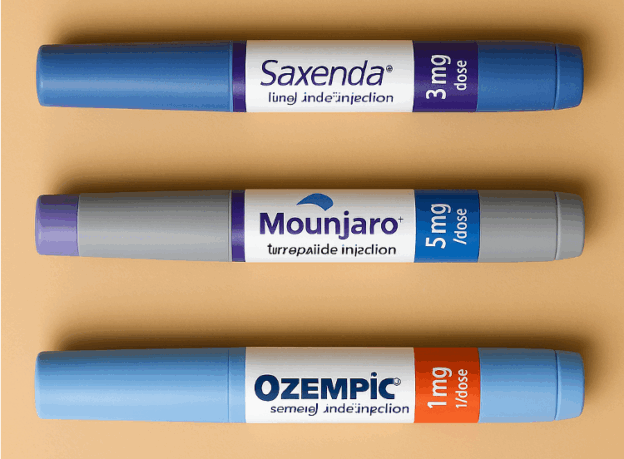Recently, weight loss medications known as GLP-1 agonists, including Ozempic and Mounjaro, have gained widespread attention. Celebrities and everyday people alike are using these drugs to manage obesity and diabetes, leading to rapid adoption. The business of these medications has boomed so quickly that some restaurants have reported declines in business as more people turn to medication for weight loss rather than traditional dieting or exercise. While these medications show promise for weight loss and diabetes management, it’s important to be aware of potential side effects, especially those related to eye health.
What are GLP-1 Agonists?
GLP-1 agonists are a class of medications used to treat type 2 diabetes and obesity in some cases. These medications work by mimicking the way a hormone called glucagon-like peptide 1 works in the body. When blood sugar levels start to rise after a person eats, these medicines cause the body to make more insulin. The extra insulin helps lower blood sugar. This lowering of blood sugar helps to control type 2 diabetes.
Additionally, these drugs also lead to weight loss. They supposedly curb appetite by slowing the movement of food from the stomach into the small intestine. However, the exact mechanism of this effect on weight loss is not fully understood.
How Do GLP-1 Agonists Affect Eye Health?
While GLP-1 agonists can significantly benefit those with diabetes and obesity, there are some potential implications for eye health that patients should be aware of.
- Dry eyes
Research has shown a potential link between various types of GLP-1 agonist medications and dry eye disease. This can cause irritation, redness, discomfort and potentially blurry vision. However, other studies have found that these medications may improve dry eye symptoms in some patients.
- Diabetic Retinopathy
Some GLP-1 agonists have been linked to an increased risk of diabetic retinopathy (DR), particularly in patients with pre-existing DR or those at high risk of developing DR. This happens because rapidly decreasing blood sugar can lead to changes in the blood vessels of the retina, potentially causing swelling or new blood vessel formation. However, the long-term benefits of better glucose control often outweigh the initial risks, especially if your retinopathy is monitored closely.
- Non-arteritic Anterior Ischemic Optic Neuropathy (NAION)
A new study has suggested a potential connection between GLP-1 agonists and Non-Arteritic Anterior Ischemic Optic Neuropathy (NAION), commonly referred to as blinding eye disease. NAION is a condition where blood flow to the optic nerve is reduced, potentially leading to vision loss and is the second leading cause of optic nerve blindness. However, the link between NAION and these medications has not been fully established.
- Other potential effects
Blurred vision is a common, temporary side effect of GLP-1 agonists, as fluctuating blood sugar levels can cause temporary changes in the shape of the lens of the eye. Some people have also reported other effects such as double vision (diplopia), photopsia (seeing flashes of light), floaters (spots or strings in the vision), and changes in colour perception.
What Should You Do If You’re Using GLP-1 Agonists?
If you are using a GLP-1 agonist, it’s important to monitor your eye health regularly.
- Routine Eye Examinations: Ensure you have regular eye exams, especially if you have diabetes. Early detection of diabetic retinopathy or other conditions will help prevent long-term vision problems.
- Report Changes in Vision: If you notice sudden changes in your vision, such as blurred vision, flashes of light, or eye discomfort, make an appointment with your optician or ophthalmologist. Early intervention can make a significant difference in treatment outcomes.
- Hydrate: To reduce the risk of dry eyes, ensure you stay well-hydrated and use lubricating eye drops as needed.
Research into GLP-1 agonists, such as Ozempic, has shown promise in preventing diabetic eye disease and improving overall eye health; however, more research is needed to fully understand the long-term implications of these medications on eye health. Also, whilst these medications can help reduce the risk of diabetic retinopathy by improving blood sugar control. However, they may cause temporary changes in eye health, especially in those with pre-existing eye conditions. Regular eye exams and communication with your optician are crucial for ensuring optimal eye health while using GLP-1 agonists.
If you have any concerns or would like to make an appointment, please call us on 01628 663055.
Resources
Mayo Clinic >
American Academy of Ophthalmology >
National Library of Medicine >
Science Direct >
Gene Online >

